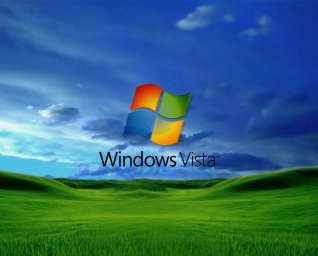0) void main()
{
int *i = 0x400; // i points to the address 400
*i = 0; // set the value of memory location pointed by i;
}
Answer:
Undefined behavior
Explanation:
The second statement results in undefined behavior because it points to some location whose value may not be available for modification. This type of pointer in which the non-availability of the implementation of the referenced location is known as 'incomplete type'.
1) #define assert(cond) if(!(cond)) \
(fprintf(stderr, "assertion failed: %s, file %s, line %d \n",#cond,\
__FILE__,__LINE__), abort())
void main()
{
int i = 10;
if(i==0)
assert(i <>
else
printf("This statement becomes else for if in assert macro");
}
Answer:
No output
Explanation:
The else part in which the printf is there becomes the else for if in the assert macro. Hence nothing is printed.
The solution is to use conditional operator instead of if statement,
#define assert(cond) ((cond)?(0): (fprintf (stderr, "assertion failed: \ %s, file %s, line %d \n",#cond, __FILE__,__LINE__), abort()))
Note:
However this problem of “matching with nearest else” cannot be solved by the usual method of placing the if statement inside a block like this,
#define assert(cond) { \
if(!(cond)) \
(fprintf(stderr, "assertion failed: %s, file %s, line %d \n",#cond,\
__FILE__,__LINE__), abort()) \
}
2) Is the following code legal?
struct a
{
int x;
struct a b;
}
Answer:
No
Explanation:
Is it not legal for a structure to contain a member that is of the same
type as in this case. Because this will cause the structure declaration to be recursive without end.
3) Is the following code legal?
struct a
{
int x;
struct a *b;
}
Answer:
Yes.
Explanation:
*b is a pointer to type struct a and so is legal. The compiler knows, the size of the pointer to a structure even before the size of the structure
is determined(as you know the pointer to any type is of same size). This type of structures is known as ‘self-referencing’ structure.
4) Is the following code legal?
typedef struct a
{
int x;
aType *b;
}aType
Answer:
No
Explanation:
The typename aType is not known at the point of declaring the structure (forward references are not made for typedefs).
5) Is the following code legal?
typedef struct a aType;
struct a
{
int x;
aType *b;
};
Answer:
Yes
Explanation:
The typename aType is known at the point of declaring the structure, because it is already typedefined.
6) Is the following code legal?
void main()
{
typedef struct a aType;
aType someVariable;
struct a
{
int x;
aType *b;
};
}
Answer:
No
Explanation:
When the declaration,
typedef struct a aType;
is encountered body of struct a is not known. This is known as ‘incomplete types’.
7) void main()
{
printf(“sizeof (void *) = %d \n“, sizeof( void *));
printf(“sizeof (int *) = %d \n”, sizeof(int *));
printf(“sizeof (double *) = %d \n”, sizeof(double *));
printf(“sizeof(struct unknown *) = %d \n”, sizeof(struct unknown *));
}
Answer :
sizeof (void *) = 2
sizeof (int *) = 2
sizeof (double *) = 2
sizeof(struct unknown *) = 2
Explanation:
The pointer to any type is of same size.
8) char inputString[100] = {0};
To get string input from the keyboard which one of the following is better?
1) gets(inputString)
2) fgets(inputString, sizeof(inputString), fp)
Answer & Explanation:
The second one is better because gets(inputString) doesn't know the size of the string passed and so, if a very big input (here, more than
100 chars) the charactes will be written past the input string. When fgets is used with stdin performs the same operation as gets but is safe.
9) Which version do you prefer of the following two,
1) printf(“%s”,str); // or the more curt one
2) printf(str);
Answer & Explanation:
Prefer the first one. If the str contains any format characters like %d then it will result in a subtle bug.
10) void main()
{
int i=10, j=2;
int *ip= &i, *jp = &j;
int k = *ip/*jp;
printf(“%d”,k);
}
Answer:
Compiler Error: “Unexpected end of file in comment started in line 5”.
Explanation:
The programmer intended to divide two integers, but by the “maximum munch” rule, the compiler treats the operator sequence / and * as /* which happens to be the starting of comment. To force what is intended by the programmer,
int k = *ip/ *jp;
// give space explicity separating / and *
//or
int k = *ip/(*jp);
// put braces to force the intention
will solve the problem.
11) void main()
{
char ch;
for(ch=0;ch<=127;ch++)
printf(“%c %d \n“, ch, ch);
}
Answer:
Implementaion dependent
Explanation:
The char type may be signed or unsigned by default. If it is signed then ch++ is executed after ch reaches 127 and rotates back to -128. Thus ch is always smaller than 127.
12) Is this code legal?
int *ptr;
ptr = (int *) 0x400;
Answer:
Yes
Explanation:
The pointer ptr will point at the integer in the memory location 0x400.
13) main()
{
char a[4]="HELLO";
printf("%s",a);
}
Answer:
Compiler error: Too many initializers
Explanation:
The array a is of size 4 but the string constant requires 6 bytes to get stored.
14) main()
{
char a[4]="HELL";
printf("%s",a);
}
Answer:
HELL%@!~@!@???@~~!
Explanation:
The character array has the memory just enough to hold the string “HELL” and doesnt have enough space to store the terminating null character. So it prints the HELL correctly and continues to print garbage values till it accidentally comes across a NULL character.
15) main()
{
int a=10,*j;
void *k;
j=k=&a;
j++;
k++;
printf("\n %u %u ",j,k);
}
Answer:
Compiler error: Cannot increment a void pointer
Explanation:
Void pointers are generic pointers and they can be used only when the type is not known and as an intermediate address storage type. No pointer arithmetic can be done on it and you cannot apply indirection operator (*) on void pointers.
16) main()
{
extern int i;
{ int i=20;
{
const volatile unsigned i=30; printf("%d",i);
}
printf("%d",i);
}
printf("%d",i);
}
int i;
17) Printf can be implemented by using __________ list.
Answer:
Variable length argument lists
18) char *someFun()
{
char *temp = “string constant";
return temp;
}
int main()
{
puts(someFun());
}
Answer:
string constant
Explanation:
The program suffers no problem and gives the output correctly because the character constants are stored in code/data area and not allocated in stack, so this doesn’t lead to dangling pointers.
19) char *someFun1()
{
char temp[ ] = “string";
return temp;
}
char *someFun2()
{
char temp[ ] = {‘s’, ‘t’,’r’,’i’,’n’,’g’};
return temp;
}
int main()
{
puts(someFun1());
puts(someFun2());
}
Answer:
Garbage values.
Explanation:
Both the functions suffer from the problem of dangling pointers. In someFun1() temp is a character array and so the space for it is allocated in heap and is initialized with character string “string”. This is created dynamically as the function is called, so is also deleted dynamically on exiting the function so the string data is not available in the calling function main() leading to print some garbage values. The function someFun2() also suffers from the same problem but the problem can be easily identified in this case.





